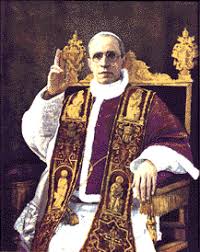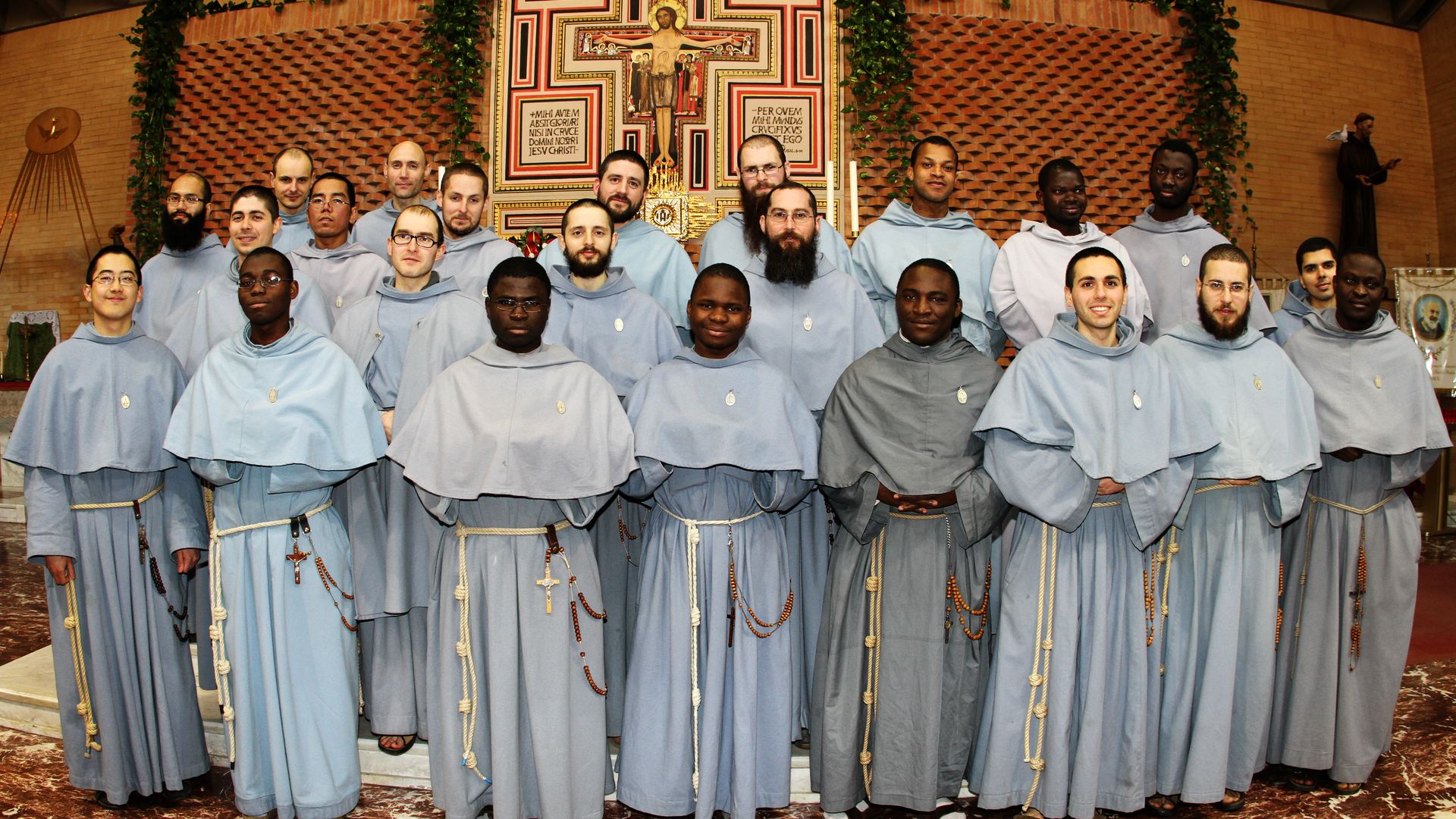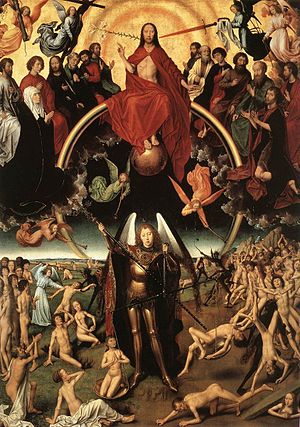There is a new priest of the Institute of Christ the King Sovereign Priest in England 1 who has been given permission to offer the Traditional Latin Mass unlike the Frnciscan Friars of the Immaculate since the Institute interprets Vatican Council II and other magisterial documents with 'the speculative doctrines of Karl Rahner, the Jesuit' as the Franciscans of the Immaculate recently disclosed to Fr. Ray Blake.
Like the Latin Mass Society of England and Wales, he will be given permission to offer the Traditional Latin Mass since he interprets the dogma extra ecclesiam nulla salus and Vatican Council II with an irrational premise and conclusion; he will assume hypothetical cases are objectively visible in the present times.
The priests who offer the TLM are not allowed to affirm in public exlusive salvation in the Catholic Church. So the ecclesiology of the TLM today in England is not the same as in pre-Council of Trent times.
There is no denial or correction to these blog posts which say the Traditional Latin Mass (TLM) and the Novus Ordo Mass are being accompanied with a heretical and irrational theology, which changes Church doctrine and is a clear break with the ecclesiology of the TLM before the Council of Trent. To change the Nicene Creed, reject the dogma extra ecclesiam nulla salus(EENS) and interpret Vatican Council II as a break with EENS and the Syllabus of Errors, is a sin of faith.It is rejecting teachings of the Church which are obligatory for Catholics.It is a first class heresy and so a mortal sin. It is an impediment to offering Holy Mass for a priest and receiving the Eucharist at Mass for a lay person, in this state.
 With the theology of Cushingism, the traditionalists Fr.John Hunwicke, the FSSP priests, Joseph Shaw and the Latin Mass societies,the Institute of Christ the King priests,the Remnant forum members, Roberto dei Matei and sedevacantists reject Church doctrine, necessary to affirm.They reject it dejure ( in principle) and defacto( in act and practise).
With the theology of Cushingism, the traditionalists Fr.John Hunwicke, the FSSP priests, Joseph Shaw and the Latin Mass societies,the Institute of Christ the King priests,the Remnant forum members, Roberto dei Matei and sedevacantists reject Church doctrine, necessary to affirm.They reject it dejure ( in principle) and defacto( in act and practise).
So the contemporary Traditional Latin Mass becomes modernist for them. The new ecclesiology is modernist.
 Similarly journalists Edward Pentin, Cindy Wooden, Marco Tosatti and Andrea Tornielli use Cushingism as a theology to interpret magisterial documents and fundamental doctrines of the Church. The result is non traditional, heretical and irrational.They attend Mass with this new theology.
Similarly journalists Edward Pentin, Cindy Wooden, Marco Tosatti and Andrea Tornielli use Cushingism as a theology to interpret magisterial documents and fundamental doctrines of the Church. The result is non traditional, heretical and irrational.They attend Mass with this new theology.
Both groups for instance, assume Lumen Gentium 16 ( being saved in invincible ignorance) as referring to visible instead of invisible cases. So LG 16 becomes a break with the traditional teaching on all needing to be formal members of the Church to avoid Hell.It is a break with EENS.
For me LG 16 refers to invisible cases.So LG 16, LG 8, UR 3 etc is not a break with EENS. Vatican Council II is not a break with EENS, the Feeneyite version of EENs.
It is different with me. However if you ask both groups, traditionalists and journalists, if they interpret Vatican Council II with Cushingism ( LG 16 is explicit) or Feeneyism ( LG 16 is invisible ), they will say it is with Cushingism.
Traditionalist Cushingites, will answer the following questions with a Yes. Confirm it. Ask the Catholic journalists too. The answer will be Yes. It will be Yes to irrationality. There answers are contrary to common sense.
1.IS IT TRUE YOU ASSUME THERE ARE EXCEPTIONS TO THE DOGMA EXTRA ECCLESIAM NULLA SALUS (EENS) ? Their answer is : YES.
2. FOR YOU THE BAPTISM OF DESIRE AND BLOOD, AND BEING SAVED IN INVINCIBLE IGNORANCE ARE EXCEPTIONS TO EENS? Their answer is : YES.
3.SINCE THERE ARE EXCEPTIONS TO EENS THESE EXCEPTIONS WOULD HAVE TO BE EXPLICIT, SEEN IN THE FLESH ,TO BE EXCEPTIONS? Their answer is : YES.
4.THIS WOULD BE THE THEOLOGY OF CUSHINGISM AS OPPOSEED TO FEENEYISM, WHICH SAYS THERE ARE NO EXCEPTIONS TO EENS ? Their answer is : YES.
5.SO YOU ACCEPT CUSHINGISM AND REJECT FEENEYISM ? Their answer is :YES
6.THIS IS A BREAK WITH THE LATIN MASS ECCLESIOLOGY BEFORE THE COUNCIL OF TRENT, FOR EXAMPLE? The answer is : YES.
Similarly if you ask them the following questions on Feeneyism they will confirm that they use an irrationality to reject the old ecclesiology of the Church and re interpret magistertial documents with an irrationality.
1.Feeneyism says there are no exceptions to the dogma extra ecclesiam nulla salus, there are no known exceptions? Answer: Yes. Agreed.This is being Feeneyite.
You reject Feeneyism since for you there are exceptions? Answer : Yes. So does the magisterium.
2.Feeneyism says there cannot be any known exception to the dogma EENS for us humans, since we cannot physically see or know any exception.They would be known only to God ?The answer is Yes. Agreed.There cannot be any any known exceptions for Feeneyite.
You reject Feeneyism since for you there are known exceptions? Yes.
3.There is no magisterial document before 1949 which clearly says the baptism of desire and blood or being saved in invincible ignorance refer to implicit cases and so are exceptions to EENS? Their answer is Yes. Agreed. (There is no such case,unless, it is inferred wrongly that there is such a case. The wrong inference is made by theologians)
 You infer they are exceptions, so you reject Feeneyism as it was known in pre-Council of Trent times? Yes. Since the Letter of the Holy Office 1949 to the Archbishop of Boston made the inference and the magisterium accepted it.
You infer they are exceptions, so you reject Feeneyism as it was known in pre-Council of Trent times? Yes. Since the Letter of the Holy Office 1949 to the Archbishop of Boston made the inference and the magisterium accepted it.
4.Liberal theologians interpret the Council of Trent phrase 'the desire thereof' as referring to explicit, known in the flesh cases and you accept this ? Yes.
So this is a rejection of Feeneyism? Yes.
So both groups you would find reject Feeneyism and accept irrational Cushingism as a theology.
I accept Feeneyism and reject Cushingism.For me the contemporary Traditional Latin Mass and the Novus Ordo Mass are not heretical and modernist.
While Fr. John Hunwicke, Joseph Shaw, the FSSP priests and the sedevantists influenced by Archbishop Marcel Lefebvre, do not say that they reject Cushingism and accept Feeneyism.They offer/ attend Mass with an irrational and heretical interpretative theology.
-Lionel Andrades
1.
http://www.lmschairman.org/2016/09/a-third-priest-for-institute-in-new.html

The reason for all this (persecution) according to Franciscans of the Immaculate is not merely their support of 'Tradition', though all of them seem happy to celebrate both forms of the Roman Rite but their opposition to the speculative doctrines of Karl Rahner, the Jesuit








